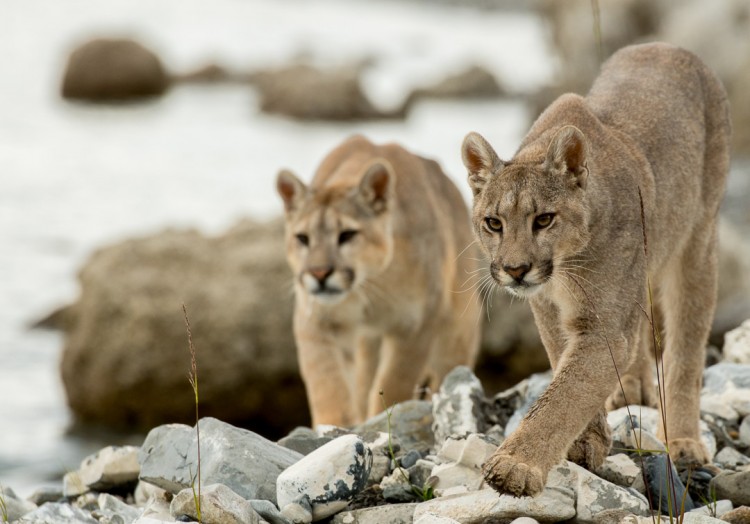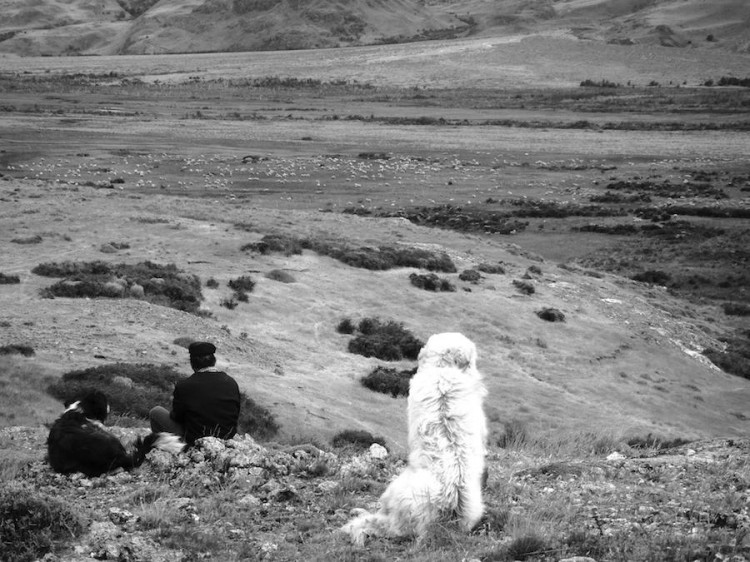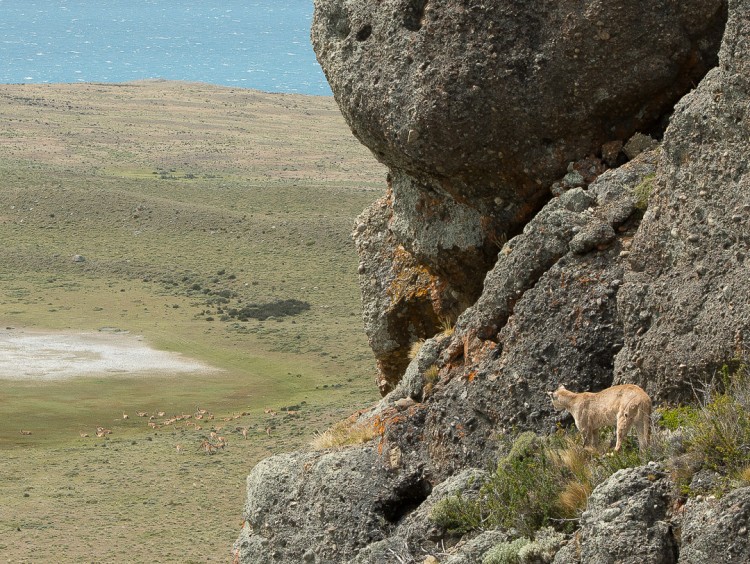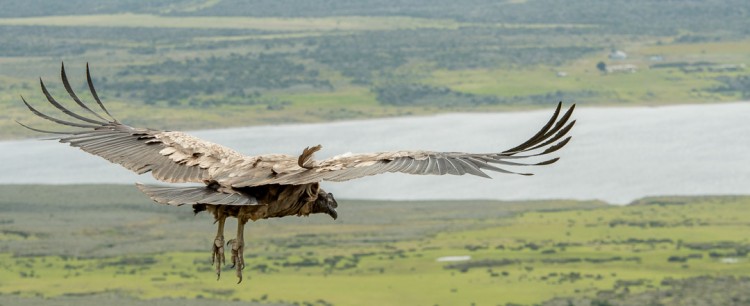Puma Tourism Protects Patagonia’s Wild Cats


Puma, Cougar, Panther, Catamount. With a historic range from Alaska and Northern Canada, through the United States, Central America and all the way down to the southern tip of South America, the Mountain Lion is known by many names. They are secretive by nature yet occasionally persecuted after conflict with ranching and hunting interests. But for some cats in southern Patagonia things are changing. Can sustainable ranching practices and the development of a puma and wildlife watching tourism industry be the key to the future of both ranching and the Patagonian Ecosystem?
Carnivore Management or Carnivore Coexistence
Historically, aggressive management of predators has been a dominant method for subsidizing ranching and hunting across the Americas. In the early 1900’s conservationist Aldo Leopold mused on the subject after killing a wolf:
“We reached the old wolf in time to watch a fierce green fire dying in her eyes. I realized then, and have known ever since, that there was something new to me in those eyes—something known only to her and to the mountain. I was young then, and full of trigger-itch; I thought that because fewer wolves meant more deer, that no wolves would mean hunters’ paradise. But after seeing the green fire die, I sensed that neither the wolf nor the mountain agreed with such a view.” - Aldo Leopold, A Sand County Almanac 1949
The same mindset has dominated mountain lion management. In an effort to protect their sheep herds Chilean cowboys, known as Gauchos, often employ leoneros. The hunters, led by hounds to dispatch hundreds of lions each year off of ranches in Chile and Argentina. Is lethal control the only option? Some ranchers don’t think so, and are now incorporating livestock protection dogs, giant breeds such as Great Pyrenees into their herds. Ever vigilant, these dogs will even chase away humans who venture too close, as this author learned first hand while traveling in Patagonia!

Pumas largely target guanacos, an ancestor to the llama, as their primary prey source, and livestock protection dogs could provide enough of a deterrent to make the pumas stick to what they already know best. However, Dogs are an additional expense and require care and training, which can be a barrier to effective use. As Patagonias' ranchers look towards the future, yet another option is arising.
Walking with the Pumas - the rise of EcoTourism in Patagonia
Sheep ranching has never been an easy venture, especially in extreme climates such as Patagonia. Severe weather can kill flocks of sheep, and shifts in the market make already slim margins even more risky. Some ranchers, especially those near protected areas such as Torres del Paine are turning to tourism as a sustainable option which will keep their lands wild.
Earlier this year, while the Jackson Hole Valley and Tetons lay blanketed in deep winter snow, EcoTour Adventures founder Taylor Phillips and Panthera Pumas biologist Dr. Mark Elbroch ventured south to one such ranch. Scientists estimate that the lands surrounding Torres could contain more than two times the density of pumas than inside the park boundary, some of the highest densities of the big cat in the world. What Philips and Dr. Elbroch found was no exception.
The pair spent a week with a female puma and her kittens, who, free from the threat of human hunting, now offer intimate glimpses into their lives. They watched in awe as the cats hunted guanacos. Nearby, flocks of black faced ibis foraged in the windswept grasslands. The ranch also provides habitat for the flightless Rhea, an ostrich like bird native to South America. Zorros (South American Gray foxes) also roam the ranch, and Andean Condors, with giant 10 foot wingspans, may be seen soaring across the Patagonian landscape.

The species found in Patagonia have spent thousands of years adapting to what can be one of the harshest landscapes on earth. Humans too have struggled to find a place in this challenging environment. Just as pumas and other species are adapting to the changing conditions of ranching and human development, we must also adapt to the wildlife around us. As the human population looks towards a sustainable economy, EcoTourism may be a first step in finding coexistence with our wild neighbors.
“If we’re bringing paying guests to see pumas living in the wild, and they’re staying at the local estancias and employing local guides, there's an incentive to keep them alive. By promoting puma ecotourism we’re helping protect these cats.” - Taylor Phillips, EcoTour Adventures
Join us to “Walk with the Pumas” in March 2020!
Panthera biologist Dr. Mark Elbroch and EcoTour Adventures are headed to Patagonia in March 2020 for an exclusive 10 day Pumas, Condors, and Whales of Patagonia Tour! The itinerary includes touring Torres del Paine National Park, a rich, 500,000+ acre landscape of towering granite spires, sweeping vistas, glaciers, and pampas; 3 days of tracking pumas on foot and 4x4 vehicle on a private estancia adjacent to the National Park; one day watching Andean condors, which, with a wingspan of up to 10 feet, are the largest flying bird in the world; and 3 days aboard the M/V Forrest in the Straights of Magellan, during which guests will see glaciers and marine wildlife like humpback whales, skua, and penguins.

Contact us at 307-690-9533 or info@jhecotouradventures.com for more information and to book.
Josh Metten is a Senior Naturalist with Jackson Hole EcoTour Adventures with nearly a decade of experience guiding and sharing stories about the Greater Yellowstone Ecosystem.
Now in our 11th year of operation, Jackson Hole Ecotour Adventures leads wildlife safaris, cross country skiing tours, and snowshoe tours in our home parks: Grand Teton and Yellowstone 365 days a year. Let us help maximize your Jackson Hole Experience Today!
Panthera’s Puma Program seeks to protect pumas across their expansive range by conducting critical ecological research, communicating the puma’s role in ecosystems, and addressing the wide-ranging persecution facing the species.













